|
|
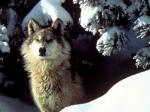
|
The Interior Alaskan Wolf
|
HABITAT
They are distributed throughout the interior of Alaska and the Yukon, except the tundra region of the arctic coast. |
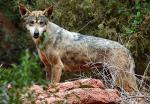
|
The Iranian Wolf
|
HABITAT
The habitat of Iranian wolves varies from arid desert regions to dense scrub forests. They can be found in the Middle East and Southwest Asia; more specifically, Northern Israel, Saudi Arabia, Afghanistan, Turkey Pakistan, and Iran. |

|
The Italian Wolf
|
HABITAT
The Italian wolf is found mainly in the Apennine Mountains in Italy. They have been found dwelling within 25 miles of Rome. Semi-recently, they have implanted themselves in Southern France, and areas of Switzerland. |

|
The Labrador Wolf
|
HABITAT
They still inhabit nearly all of their historic range in Labrador and Northern Quebec. |

|
The Mackenzie Tundra Wolf
|
HABITAT
It resides East of the Mackenzie River in the Northwest Territories of Canada from the arctic coast to south of Great Bear Lake. Signs of them have been found as far south as Great Slave Lake. |
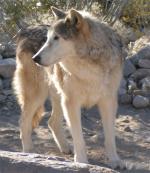
|
The Mackenzie Valley Wolf
|
HABITAT
Mackenzie Valley wolves inhabit much of western Canada and Alaska including Unimak Island. In 1995-96, they were brought from Canada to restore populations in Yellowstone National Park and central Idaho. In Alaska, wolf packs are usually 6 to 12 wolves, though some packs may be as large as 20 to 30. Their territories in Alaska average about 600 square miles. In Yellowstone, pack size averages 9.2 wolves with average territory size of 348 square miles. In Idaho, pack size averages 11.1 with territories averaging 364 square miles. |
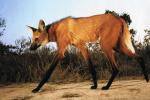
|
The Maned Wolf
|
|
Although it is a member of the Canedae family, which contains dogs, wolves, and foxes, the maned wolf is the only species in the genus Chrysocyon. It is considered not to be a "true wolf". It looks mostly like an overgrown fox with extremely long legs and a prominent crest of hair across its shoulders. |

|
The Manitoba Wolf
|
HABITAT
They supposedly reside in Alberta, Saskatchewan, Manitoba, Newfoundland, and the Northwest Territories of Canada. |

|
The Mexican Gray Wolf
|
|
Until the 1900s, the Mexican gray wolf had ranged throughout Central Mexico, Arizona, New Mexico, and Western Texas. Settlers at this time began hunting the wolf's prey, forcing the wolf to turn to feeding on the settler's livestock. This in turn lead to the settlers hunting the wolf. |
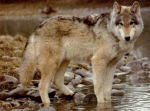
|
The Newfoundland Wolf
|
HABITAT
The Newfoundland wolf lived on the island of Newfoundland off the east coast of Canada. Recent evidence has suggested that the first wolves to inhabit the island may have been there prior to the last ice age, surviving the ice age in refugia, south of the glacial ice sheet. |
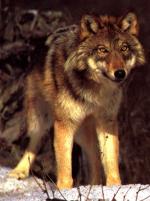
|
The North American Red Wolf
|
HABITAT
Red wolves were once present throughout the southeastern United States from the Atlantic Coast to central Texas and from the Gulf Coast to central Missouri and southern Illinois. It may have occurred as far north as Maine. The red wolf's natural home could vary from 25 to 50 square miles. Any land which provides adequate food, water, and heavy vegetation would provide viable habitat for red wolves. |
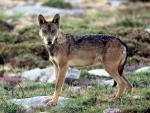
|
The Southern Rocky Mountain Wolf
|
HABITAT
They were found throughout the Rocky Mountain region from Northern Utah and Southern Wyoming, south through Utah and Western Colorado To Northern Arizona and Northern New Mexico. They then became more and more dispersed going west to Central Nevada and as far south as the Providence Mountains in Southern California. |
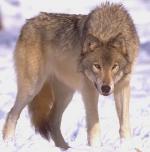
|
The Steppe Wolf
|
HABITAT
The historic range of the steppe wolf is in the countries surrounding the Caspian Sea and Black Sea. Today, it exists only in a remote area in the extreme south-western portion of Russia that borders the northern half of the Caspian Sea. |
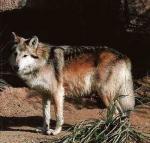
|
The Texas Gray Wolf
|
HABITAT
It could once be found from southeastern New Mexico throughout central Texas, all the way down to the Mexican border and into Louisiana. |

|
The Tibetan Wolf
|
HABITAT
The Tibetan wolf can be found in central China, the Manschurai, the jungles and deserts of Mongolia, North Sikkim, Tibet, south-western Russia, the Himalayan regions of India, Nepal and Bhutan. |
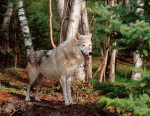
|
The Tundra Wolf
|
HABITAT
The Tundra Wolf can be found throughout Northern Europe and Asia from Northern Finland to the Kamchatka Peninsula, from the far north of Russia into the Arctic. They primarily reside in the northern arctic and boreal regions of Russia roughly between 65 and 71 degrees latitude.Although they were eliminated from some of the Arctic islands north of Siberia, they have been recently seen on Wrangle Island. |
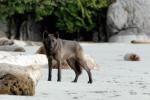
|
The Vancouver Island Wolf
|
HABITAT
Its original habitat extended from the Northern Rocky Mountains to Southern Alberta in Canada. |
|
|